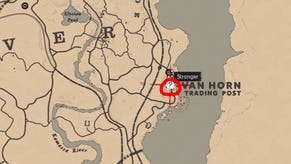"It’s important to show that there’s a vulnerability to the male ego" - an interview with Red Dead Redemption 2’s Roger Clark
This post contains spoilers for Red Dead Redemption 2.
It was just like any other audition for Roger Clark, though two things stood out. Firstly, there were no script sides available in advance so he couldn’t practise his lines. Secondly, he was asked to wear cowboy boots. Actual cowboy boots.
Clark knew he was auditioning for a video game, he was also familiar with Rockstar and had played through the previous Red Dead Redemption. With those cowboy boots clicking on the floor as he made his way into the audition room, he was pretty sure what he was getting himself into.
“It was good,” Clark remembers. “It’s hard to tell how auditions go. I can tell when they go horribly wrong, but that’s about it. I could tell this one didn’t go horribly wrong. The sides weren’t extremely relevant to what Red Dead became - as I recall, it was some guy walking into a bar or a diner. He had a relationship with a guy behind the counter and he was just shooting the s**t for a while. Eventually, he says ‘Someone put a price on your head, so I gotta kill you now’.”
"I think we might get a lot less toxic masculinity if we address that men are fragile, too - or at least as capable of being vulnerable and scared."
The casting team loved his audition. It wasn’t long before Clark was stood in the motion capture volume - a big stage with dimensionally-accurate, jury-rigged contraptions standing in for saloon doors and buildings, while horses were huge oil drums kitted with saddles so actors could hoist themselves up - wearing his mocap suit. At this point, he only knew he was going to be a playable character.
“From that, I surmised I was going to be the protagonist or a major character,” Clark tells me. “Obviously GTA 5 had three playable characters so I had no reason to assume I was the only one, or the only one you could play at any one time. I didn’t know a lot about it, to be honest.”
The cowboy boots had already given him a good idea he was working on Red Dead Redemption 2, but the reference material he was told to study by director Rod Edge all but confirmed it. “We were building up a good picture of what Arthur Morgan should be,” Clark explains. “I remember him telling me to check out The Proposition.”
The Proposition is a dusty, sparse western set in the Australian outback, where long stretches of quiet reflection are punctuated by violence. Themes of class segregation, clashing worldviews, and familial bonds also tie the two projects together.
Clark consumed as much reference material as he could, to the point where he began to recognise specific shots created as an homage to some of the most popular films in the genre. You may have caught Rockstar’s version of the iconic scene from The Assassination of Jesse James yourself, where a camera pans along with a train, lighting up bandits in the woodline before cutting to a silhouetted figure blocking the tracks. But outside of the prescribed reference material, Clark also had his own personal idea of what he wanted Arthur Morgan to represent.
“I would say Toshirō Mifune - Kurosawa’s leading man most of the time - was a huge influence for me,” Clark enthuses. “I can’t take my eyes off him. He offers something I could really take a lot of influence from for a western. He had that crazy sense of humour, then at other times he’s very stoic. He has a bit of complexity that I was hoping to bring across with Arthur Morgan. This is a character players spend hours and hours with, so I wanted to make him as complex as I could.”
One quality Clark was eager to get across in his character was a sense of vulnerability. Red Dead Redemption 2 starts in the same way most Rockstar games do - once you’re past the opening mission, icons on the map mark people of interest. You head to the icons, accept a mission, a cutscene plays, and you do a task for the NPC. You’re an obedient soldier, the muscle of the gang, always willing to put yourself in harm’s way. As the game progresses, as Arthur’s viewpoints change, he gains more agency. He still heads to icons, but they aren’t always what you expect, and Arthur starts to do the things he wants to do, rather than simply complying with father figure and gang leader Dutch Van der Linde’s whims.
"I don’t know if I’ll ever do anything like it again. It wasn’t just five years long, it was five years of secrecy as well."
“When I did one of Arthur’s last scenes for the first time, I got the sides around a week in advance, and I started to get a bit anxious,” Clark remembers. “I was nervous to say goodbye to a character that I’d been working on for so long. There were definitely a lot of emotional times. I wanted to bring across a certain vulnerability to Arthur, which is something I don’t think westerns have addressed as much as they possibly could have. When we think of the genre, we think of the strong, masculine protagonist, and I think it’s important to show that there’s a definite vulnerability to the male ego, to male characters, and I think we might get a lot less toxic masculinity if we address that men are fragile, too - or at least as capable of being vulnerable and scared.”
It’s no coincidence that one of the game’s most powerful moments reflects that sentiment, with Arthur saying two words you don’t often hear out of a video game protagonist’s mouth: “I’m afraid”. It’s at this end point, when he is dying, that he begins to take ownership for his past choices - his choice to think only of the good of the gang at the expense of everyone else, himself included. But where does his hunger for redemption come from - is it a genuine effort to right wrongs, or is he thinking about the stories people will tell about him after he’s gone?
“People tend to get more religious as they age. I don’t know why,” Clark says. “I think as one starts to see their impending mortality and the end coming closer and closer... I think if Arthur was trying to save his own ass in the afterlife, he may have chosen some easier people to help.
“Also, the way he goes and does what he can to help John Marston. I think one of the reasons John and Arthur have this kind of sibling animosity for each other at the beginning of the game is because Arthur resents John. John has what Arthur wishes he could have - a wife and child - but eventually, when Arthur realises the gang is going downhill fast and John and his family might not be able to get out, he tries to do what he wishes he could have done for himself. Whether that’s selfish or not? I don’t think it is, but there’s definitely an argument for the other way.”
While Red Dead Redemption 2’s story was essentially about the breakdown of a dysfunctional family, things couldn’t have been more different on-set. Over 1,000 actors worked on the game, but the core crew - the Van der Linde gang - became an inseparable unit, bonding over this behemoth they’d committed five years of their lives to seeing through.
“Oh my gosh, it was unprecedented,” Clark admits. “I don’t know if I’ll ever do anything like it again. It wasn’t just five years long, it was five years of secrecy as well. Necessary secrecy. The relationships we built up with each other over those five years, I don’t know what else to compare it to. Not only were we constantly working together, but we had nobody else to talk to about the work, except each other. It really afforded us the time to get to know the ins and outs of each other’s motivations and the storyline, to come up with plausible backstories that we all had a mutual understanding of, to really show the cohesiveness of the gang and the time they’ve been together. It was easier to recreate that when we were kind of doing it ourselves as well.
“Benjamin Byron Davis (Dutch Van der Linde) and Steve Palmer (Bill Williamson) would fly over from LA, most of the cast were New York-bound, but Rob Wiethoff (John Marston) would come over from Indiana. Whenever they would fly over, it would be like seeing an old friend, like a gang reunion.”
Most of the core team remained the same throughout production, though the actor who played Charles Smith was recast because the initial choice wasn’t the right fit. Other actors moved away, some took on other commitments, and some of the cast sadly died. It was a long, gruelling process - particularly for the casting department - with many moving parts.
“I’m presuming now, but I think the amazing writers - Dan Houser, Michael Unsworth, and Rupert Humphries - when we started the project, had a very loose, kind of skeletal structure,” Clark says. “But they didn’t really commit until they saw what the actors were bringing, then really fleshing it out. Things really changed as the years went by, when we started to see what worked well and what didn’t. A lot of little nuances and details were changed for a variety of reasons. Every time something changed, it was because they had a commitment to quality and they wanted to put forward the best version of the story they thought they could.”
While the writers did what they could to make the story resonate, the actors did their bit in the performance capture volume. There’s a common misconception around acting in games, where people lump everything into one category: voice acting. You don’t see many voice actors pulling themselves onto a saddled-up oil drum, however - performance capture is a more physical discipline and is much closer to theatre, tracking facial features and physical presence like any full body performance would. This comes with its own set of challenges, but it also allows the cast to deliver a more natural performance, reacting to each other and playing off that trust built up in their bonding sessions off set.
It might be over now, but it looks like Clark and the gang won’t fall apart like Dutch’s crew - the cast's real life bond has become as strong as Arthur's with his horse, which Rockstar paid service to if you managed to keep a single equine companion around long enough during the story. It was a scene that stuck out to many players as one of the most emotional in the game, and it was also one that resonated with Clark as an actor.
“When John’s telling me to hurry up and we’re getting shot at, the animators helped us as they always did, and Rod Edge is telling us there’s guns firing at you,” Clark remembers. “It was a makeshift horse’s head, a bit like The Godfather. They made it clear to me that this only happened if the player still has a high level of bonding with their horse and would only play in those instances. I knew this was going to be something important and I tried to bring that across in the performance.”
Now we as players say goodbye to Clark, one of the finest actors to don a motion capture suit and ride a pretend horse. Red Dead Redemption won’t be the same without you, and we can only pray Rockstar calls you back in for one last job. Hopefully Clark hasn’t hung up those cowboy boots just yet.




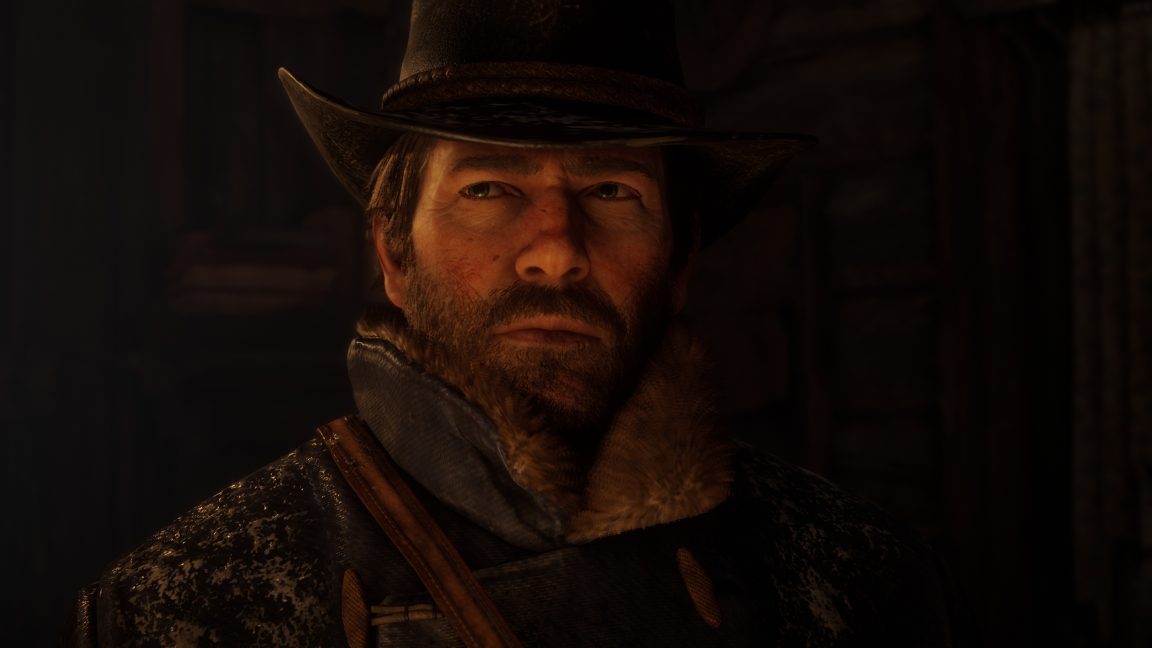


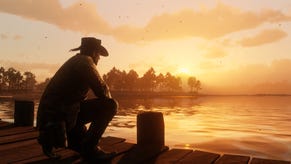
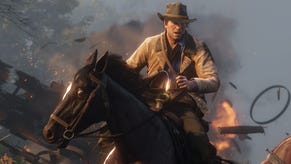
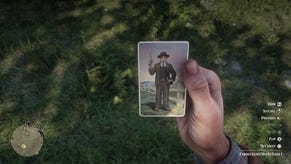
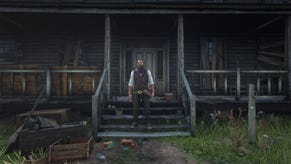
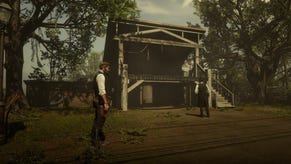
.jpg?width=291&height=164&fit=crop&quality=80&format=jpg&auto=webp)
